This post may contain affiliate links, please see the privacy policy for details.
When summer’s bounty of ripe tomatoes hits the market (or your garden), it’s the perfect opportunity to whip up your own homemade tomato paste for cozy winter meals. Learn how to make tomato paste and ditch the extra additives. This rich and flavorful paste is a game changer, far surpassing the store-bought varieties in taste and quality. With just a handful of ingredients and a bit of patience, you’ll create a thick, smooth paste that captures the essence of summer in every spoonful. Once you try this homemade version, you’ll never look back!

Once you know how to make tomato paste, use it to thicken spaghetti or pizza sauces or flavor braised beef dishes. It’s also makes a great hostess or holiday gift.
If you like this, you’ve got to try Italian tomato and bread soup, this sun-dried tomato recipe, or my cannellini and sausage skillet.

Why You’ll Love It
Make-ahead magic: This recipe can easily be doubled, tripled or quadrupled to make batch quantities.
Rich flavor: Roasting the tomatoes, garlic and onions intensifies their natural sweetness and creates a deep, savory taste.
Homemade goodness: Skip the canned stuff – this homemade paste is fresher and free from preservatives.
Versatile: Use it in pasta, soups, sauces, or even as a base for pizza.

Ingredients for Tomato Paste
A complete list of ingredients and amounts can be found in the recipe card below.
Cherry tomatoes: I used locally grown heirloom cherry tomatoes in the photos, but you can use any variety of cherry or grape tomatoes that you like. You can also use Roma, beefsteak or Campari tomatoes.
Red onion: The red onion adds a mild sweetness and depth to the paste, balancing the acidity of the tomatoes. Its vibrant color enhances the overall hue of the paste.
Fresh garlic: Roasting whole heads of garlic mellows the sharpness and brings out a sweet, caramelized flavor that infuses beautifully with the tomatoes.
Olive oil: Helps the ingredients roast evenly and adds a subtle richness while also contributing to the smooth texture of the paste.
Honey: A natural sweetener that rounds out any sharpness and complements the tomatoes’ tartness.
Dried oregano & parsley: These herbs are the perfect partners to tomato.

How to Make Tomato Paste
For more detailed instructions with weights and measurements, jump to the printable recipe card.
Arrange the Tomatoes: Spread the cherry tomatoes evenly across the prepared baking sheet.
Prep the garlic: Cut the tops off the garlic heads to expose the cloves, then place them on opposite ends of the baking sheet among the tomatoes. Add the onion.
Drizzle and season: Drizzle everything with olive oil and generously sprinkle with salt.
Roast the veggies: Roast in the oven and cool. Remove any stems from the cooked tomatoes.
Blend the ingredients: Blend in a blender or food processor. Squeeze the roasted garlic out of its skins and add it to the mix. Process the tomato sauce until its a smooth tomato puree.
Cook down the paste: Pour the mixture into a saucepan, then stir in the honey, oregano, and parsley. Add salt to taste. Bring it to a boil, then reduce to medium-low and cook for 1 hour, stirring often.
Finish and store: Once the paste is deep red and thick, remove from heat. Use it immediately or store it in a glass jar in the fridge.
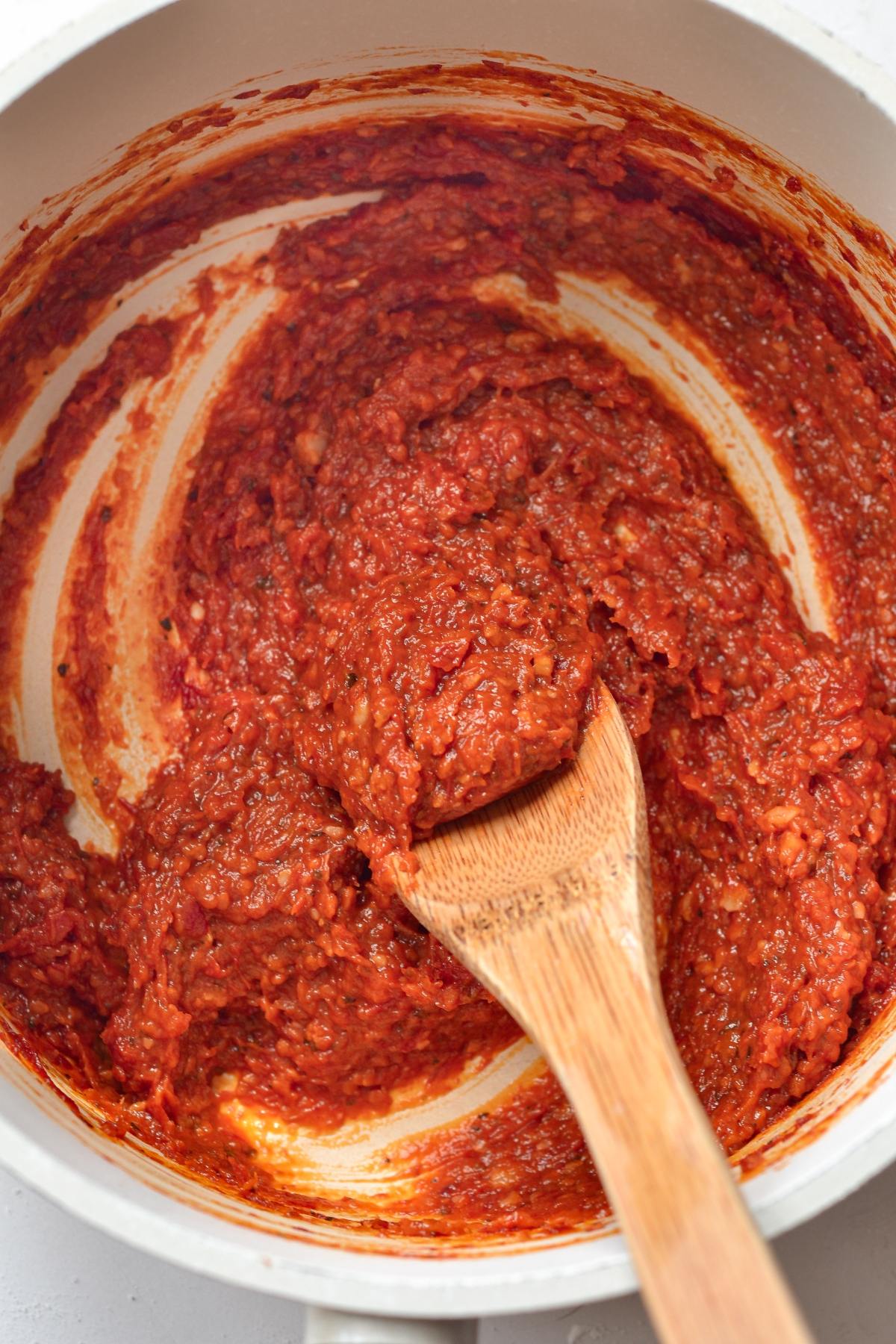
Substitutions and Variations
Herbs: You can substitute fresh herbs for dried herbs if needed – chop the herbs finely and increase the volumes to ½ or 1 tablespoon for best results.
Fresh tomatoes: If cherry tomatoes aren’t available, you can use Roma, grape or plum tomatoes. Larger tomatoes can work, too, but they may need longer roasting times.
Garlic: If you prefer a milder flavor, use fewer garlic cloves or substitute with roasted garlic paste for a smoother texture.
Red onion: Swap with yellow or white onions for a slightly different flavor profile. Shallots can also add a more delicate sweetness.
Honey: Maple syrup or agave can replace honey.
Herbs: Experiment with herbs like thyme or basil instead of oregano and parsley. Fresh herbs can be used, too.
Olive oil: Avocado oil or another neutral oil can be used if you’re out of olive oil or want a lighter flavor.
Spices: For an extra kick, add red pepper flakes or smoked paprika.

Serving Suggestions
Appetizer: Start with cheesy jalapeno corn dogs or these cheesy baby chick appetizers.
Main: Use your tomato paste inside a rich tomato dish like this garlic tomato shrimp scampi.
Dessert: End with yummy blueberry cheese ice cream or easy key lime pie.

How to Store Tomato Paste
Store: Store your homemade tomato sauce in an airtight jar or other container in the fridge for up to a week or in the freezer for 3 months. It must cool completely before storing.
Freezer: If freezing, leave some space at the top of your container to allow the paste to expand a little while freezing. Freeze tomato paste for up to 3 months. Try freezing little portions in an ice cube tray for small portions.
Thaw: Leave it out overnight in the fridge to defrost.

Top Tips
Prevent burning: If you’re worried about the garlic heads burning, wrap the bases in foil before roasting. For best results, keep the tops of the garlic exposed.
Roasting time: Remember that depending on the variety of tomatoes you use, you may need to cook your mixture longer over the stove due to differences in water content.
Control the consistency: For a thicker paste, let the mixture simmer longer. For a thinner sauce, add a splash of water or broth.
Blend in batches: If your blender or food processor is small, blend the mixture to ensure everything is smooth and well combined.
Strain for smoothness: If you prefer a super-smooth paste, pass the blended mixture through a fine-mesh sieve to remove any seeds or skins.
Taste as you go: Adjust seasoning as needed throughout the process. The flavors will concentrate as the paste cooks down, so keep checking for the right balance. If the tomatoes are too sour, add more honey. If it is too sweet, balance it with a splash of bottled lemon juice.

Tomato Paste FAQs
Roasting gives a deeper, caramelized flavor that’s key to this recipe. If you’re short on time, you can sauté the tomatoes, onions, and garlic instead. The flavor won’t be as rich, but it’ll still be tasty.
Keep the heat on medium-low and stir frequently, especially as the mixture thickens. A heavy-bottomed saucepan helps distribute heat evenly to avoid scorching.
If you don’t have a blender, use a potato masher or pass the roasted vegetables through a food mill. It won’t be as smooth, but it will still taste delicious.
Let it simmer longer on the stovetop to thicken until it reaches your desired consistency. You can thin it out with a splash of water, broth, or olive oil if it’s too thick.
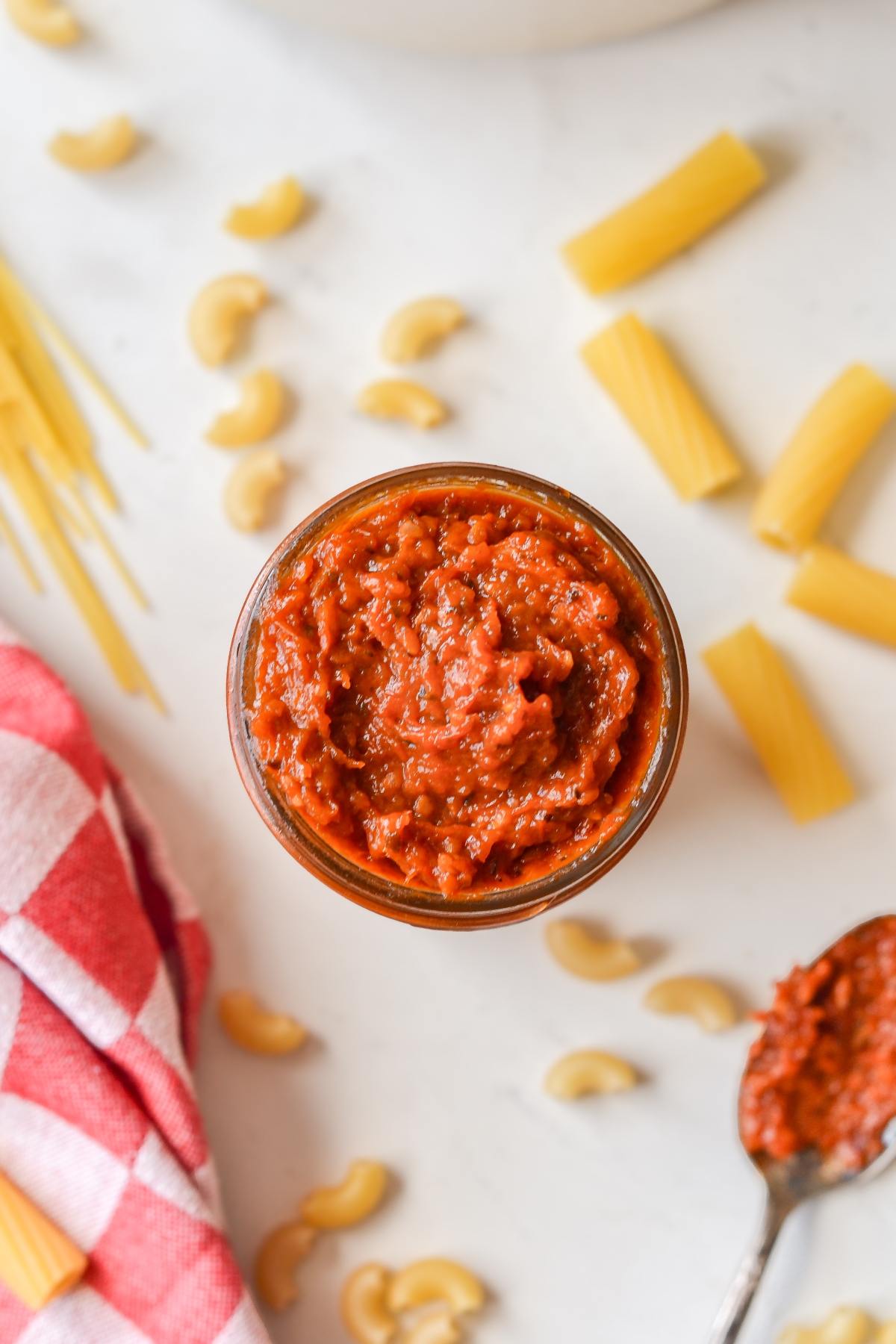
Tomato Paste Recipe

How to Make Tomato Paste
Equipment
- Saucepan 2-Quart
Ingredients
Instructions
- Preheat your oven to 375 degrees F.
- Prepare a half baking sheet with parchment or aluminum foil.
- Arrange the cherry tomatoes in a single layer on the sheet pan.
- Cut the tops off the heads of garlic so that just the tops of the cloves are exposed, then nestle them into the tomatoes, on opposite ends of the baking sheet.
- Arrange the red onion pieces, scattered amongst the tomatoes,
- Drizzle the veggies with olive oil and season liberally with salt.
- Roast the veggies in the oven for 45 to 50 minutes, until the tomatoes are juicy and popping out of their skins, the garlic is soft and paste-like, and the onions are softened and caramelized.
- Allow the vegetables to cool just enough to handle them with your fingers, then remove any stems that are still present on the tomatoes.
- Use a spatula to lift the tomatoes and onions off your baking sheet and place them into the bowl of a food processor or blender.
- Squeeze the garlic cloves out of their casings and place them into the tomato & onion mixture.
- Pulse the mixture in your food processor or blender until everything is smooth and combined.
- Scoop the tomato mixture into a saucepan and stir in the honey, dried oregano, and dried parsley. Add salt to taste.
- Bring the mixture to a boil, then reduce heat to medium-low, and cook for 1 hour, stirring often.
- When the mixture has reached a deep red, paste-like consistency, remove it from the heat.
- Use immediately in pasta or beef dishes, or spoon it into a glass jar, cover and store in the fridge.
Notes
Roasting time: Remember that depending on the variety of tomatoes you use, you may need to cook your mixture longer over the stove due to differences in water content.
Control the consistency: For a thicker paste, let the mixture simmer longer. For a thinner sauce, add a splash of water or broth.
Blend in batches: If your blender or food processor is small, blend the mixture to ensure everything is smooth and well combined.
Strain for smoothness: If you prefer a super-smooth paste, pass the blended mixture through a fine-mesh sieve to remove any seeds or skins.
Taste as you go: Adjust seasoning as needed throughout the process. The flavors will concentrate as the paste cooks down, so keep checking for the right balance. If the tomatoes are too sour, add more honey. If it is too sweet, balance it with a splash of bottled lemon juice.
Nutrition


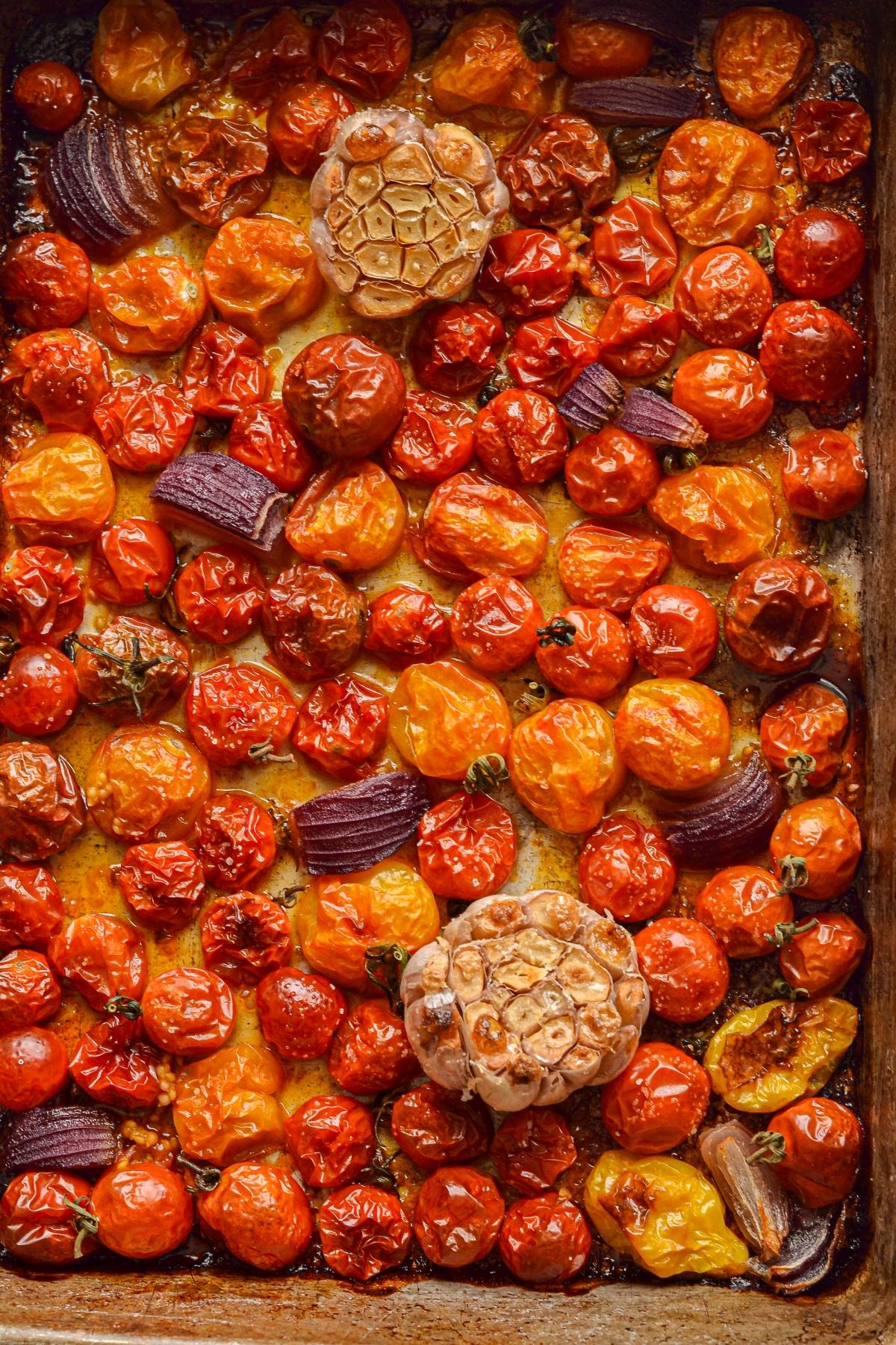
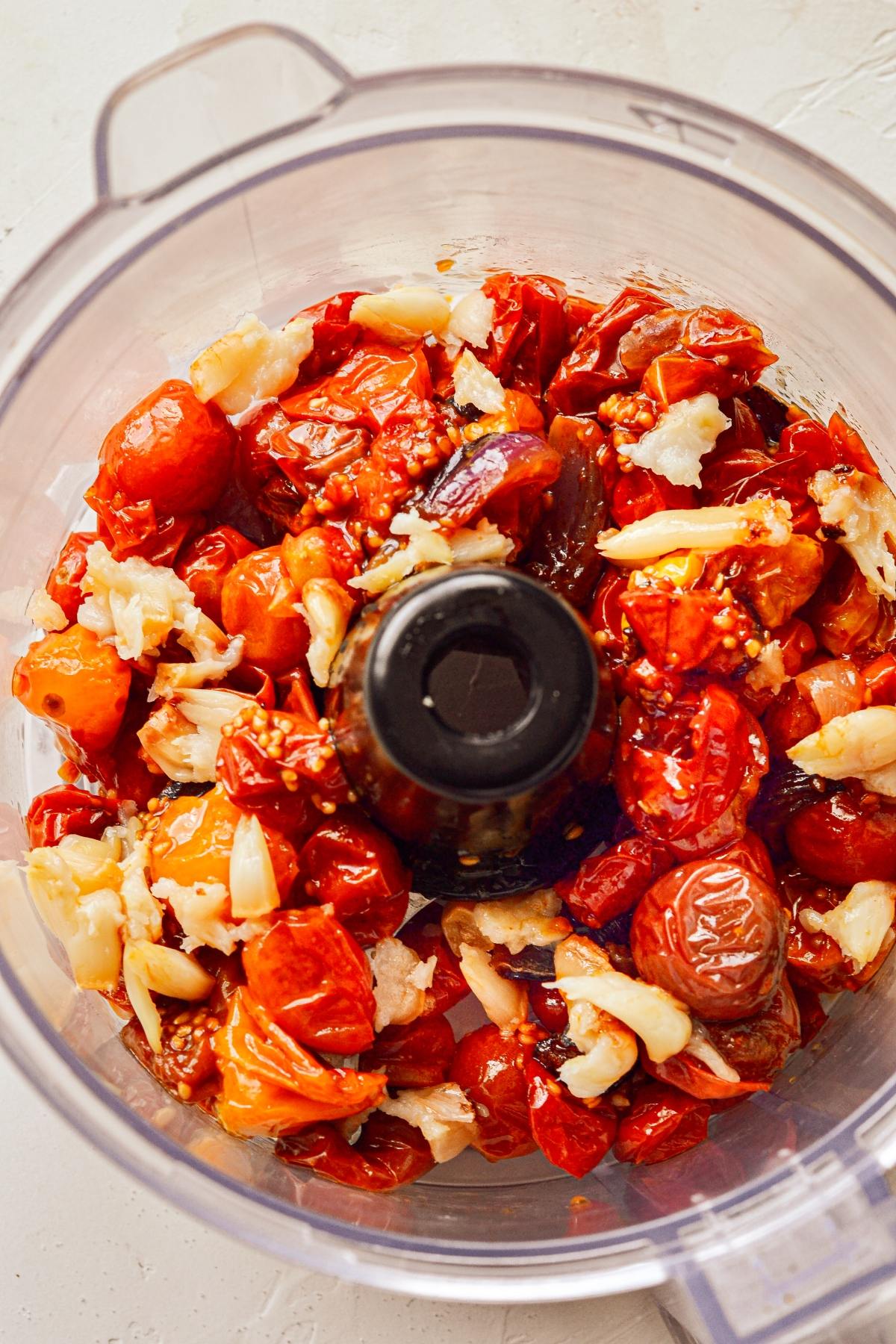
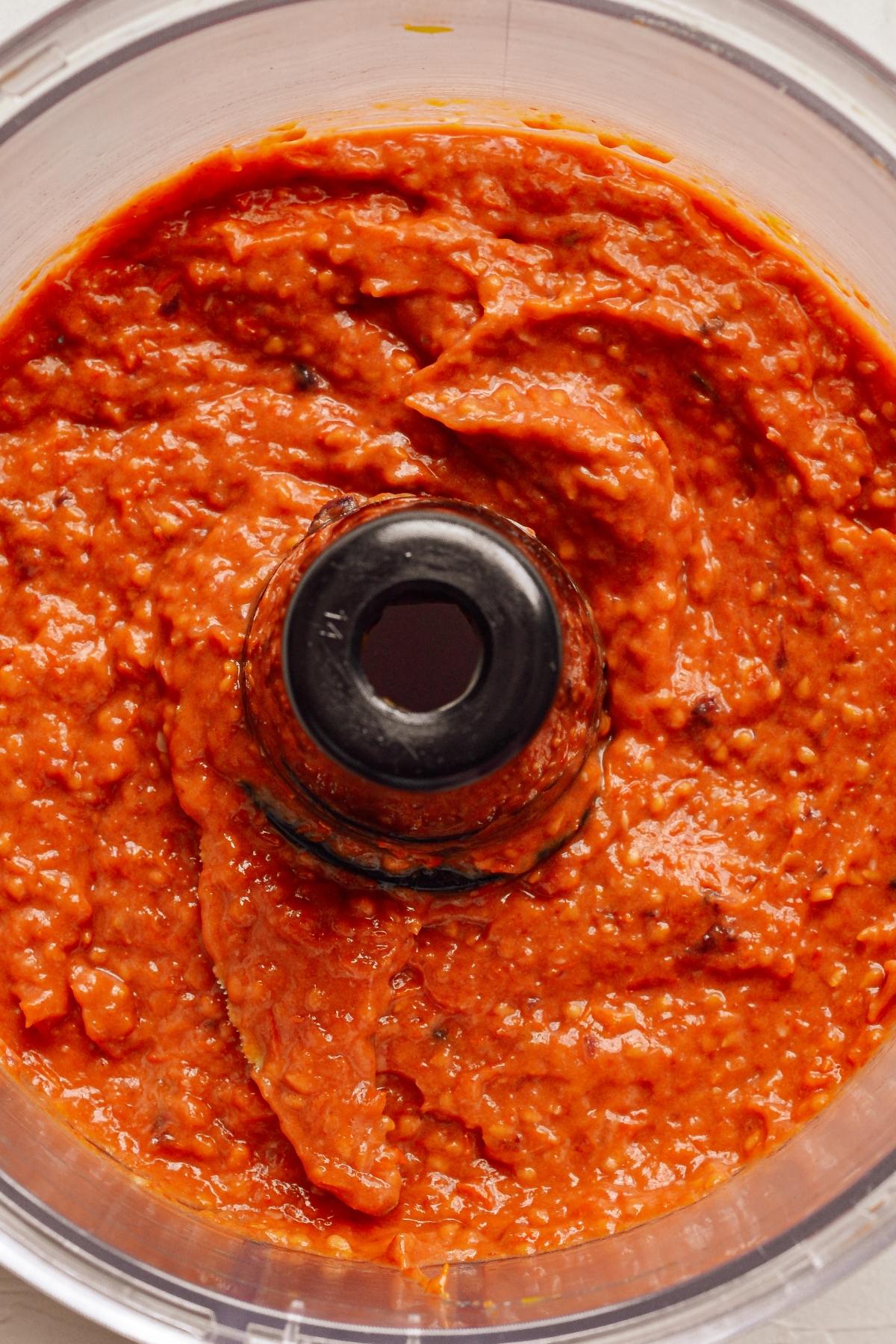
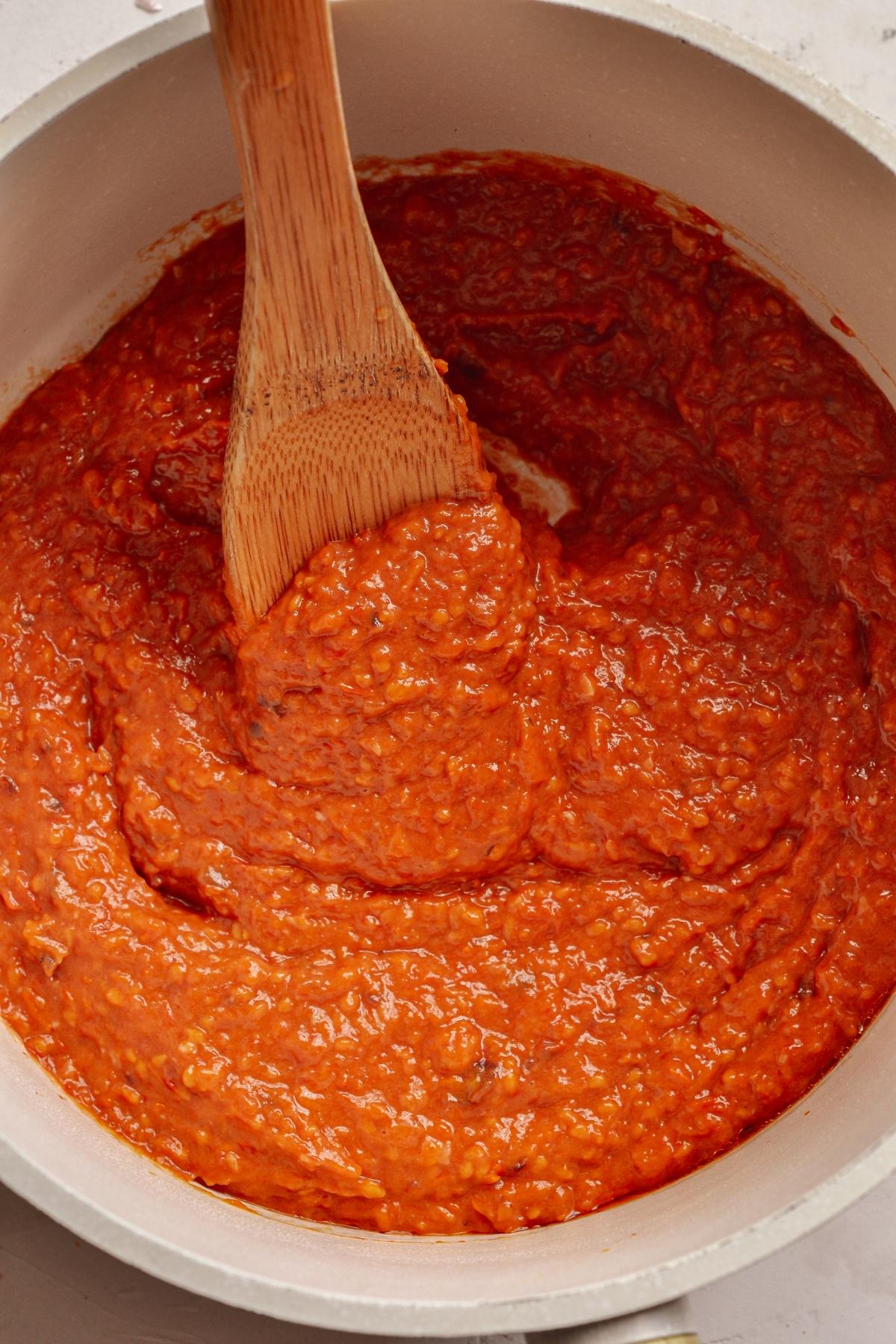
Discover how to make tomato paste and skip the store-bought versions. Craft this rich, flavorful recipe and use your own tomato paste in your kitchen. It takes a simple three-step process that results in a deeply savory and sweet tomato concentrate.
Other Tomato-based Recipes to Try
- Succulent slow cooker sausages with peppers is a cozy meal for sure.
- Whip up sheet pan lasagna for all the Italian feels in one easy-going pan recipe.
- This jalapeno hot honey is really easy to make and goes with everything.
- The delicious tomato and mozzarella sheet pan chicken recipe sings of summer, and it is great with an easy salad.
- You will never need another pasta al forno recipe again after trying this one.
- Dive into chicken parmesan subs for a hearty lunch or casual supper.


Bella Bucchiotti
Bella Bucchiotti is a Canadian-based syndicated food, travel, and lifestyle writer, photographer, and creator at xoxoBella. She founded xoxoBella in 2015, where she shares her love for food, dogs, sustainability, fitness, crafts, outdoor adventures, travel, and philanthropy to encourage others to run the extra mile, try new recipes, visit unfamiliar places, and stand for a cause. Bella creates stress-free and family-friendly recipes for weeknight dinners and festive feasts.











This was so much easier than I though it would be. I can’t believe I have never made it before!